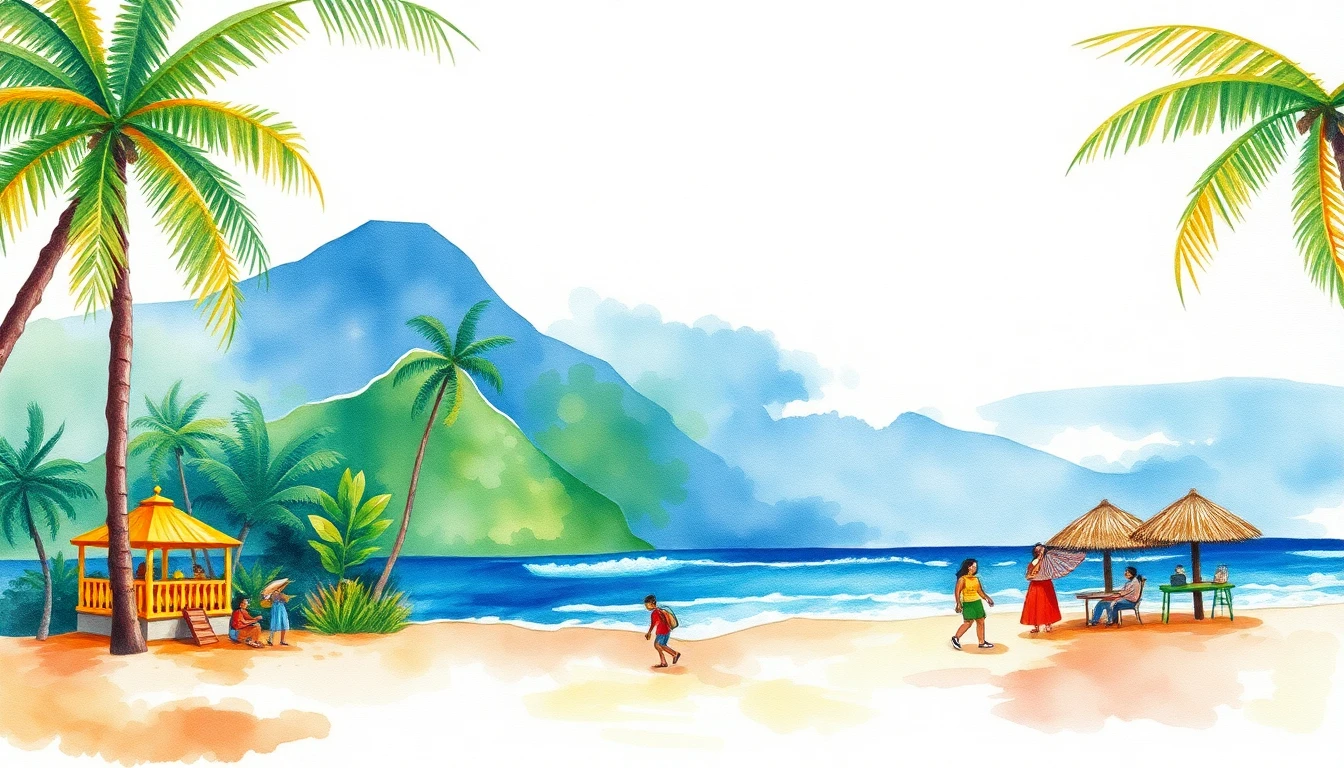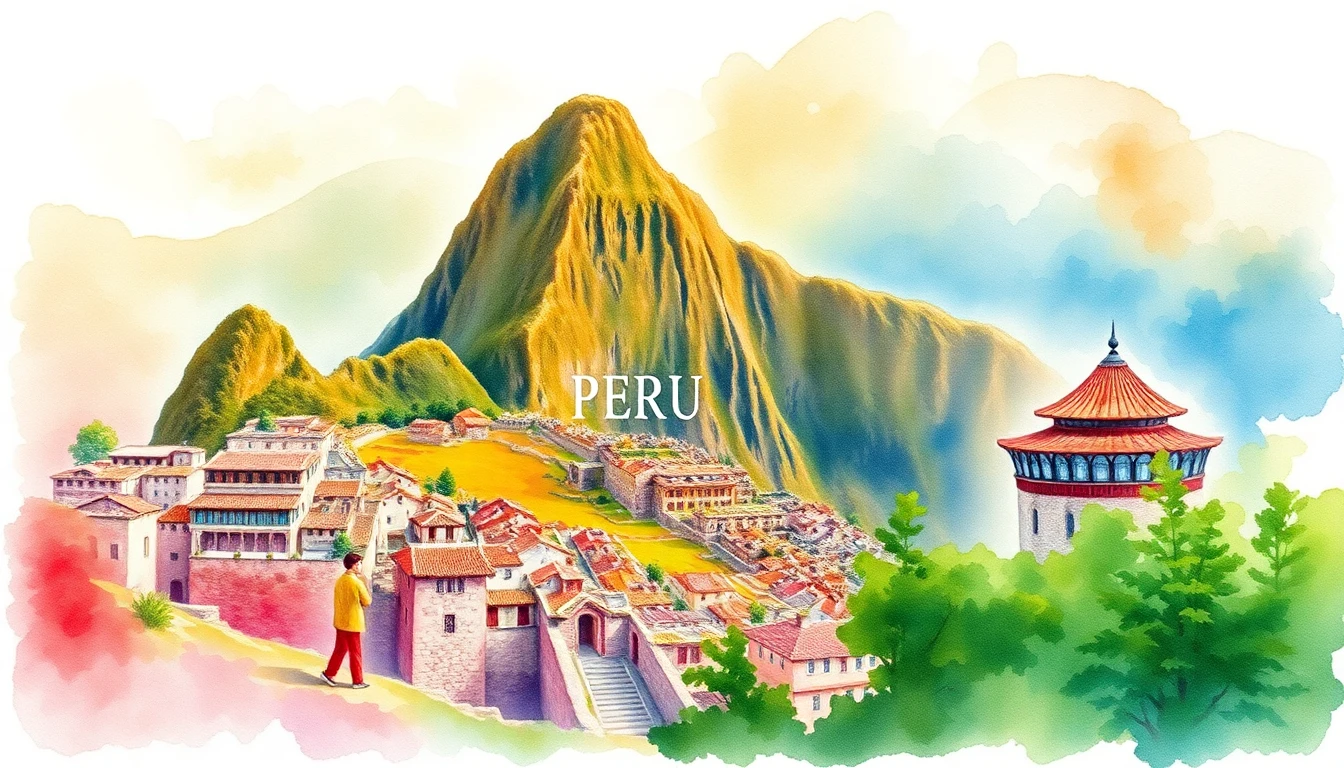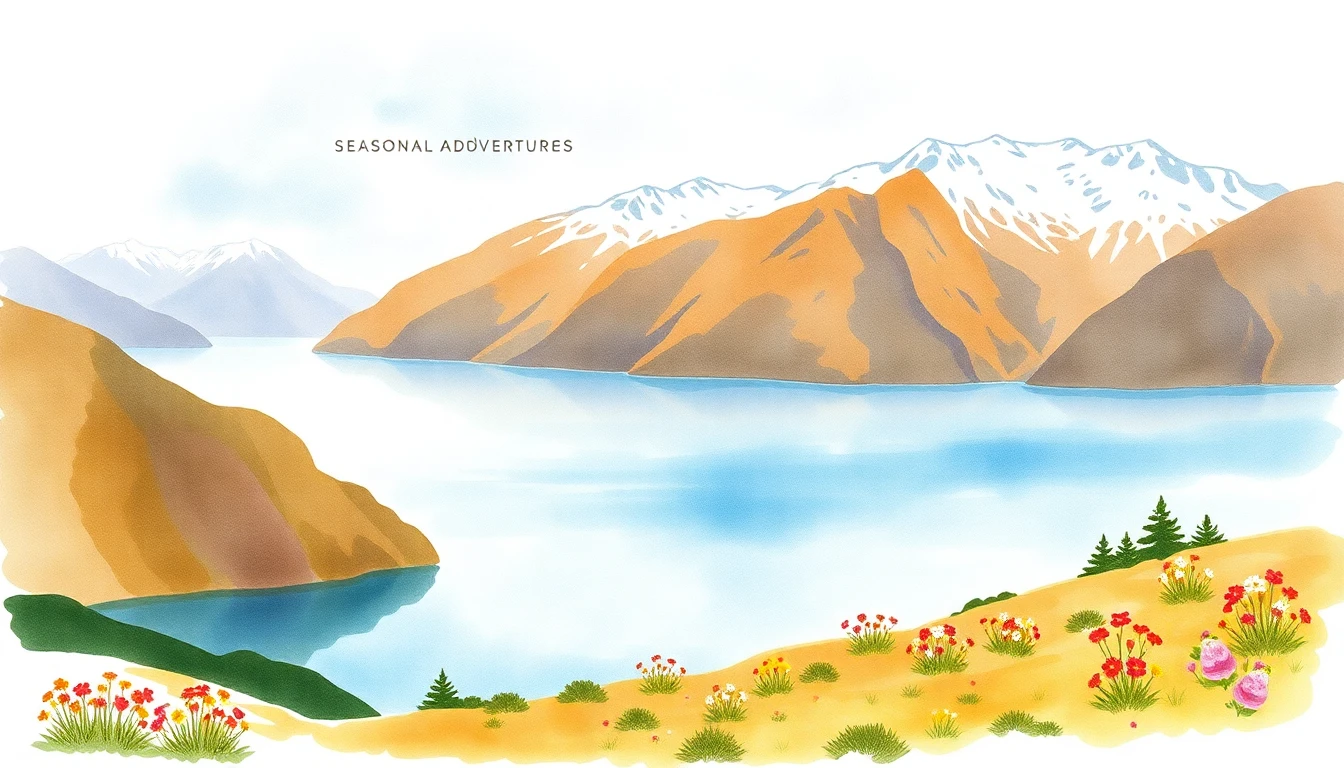Best Time to Visit Egypt 2025: Complete Season Guide
⚡ Quick Answer
The ideal time to visit Egypt is during the cooler months from October to April, when temperatures are pleasant for exploring ancient sites. Winter (December-February) offers perfect weather for sightseeing with temperatures of 20-25°C (68-77°F), while spring and fall provide excellent conditions with fewer crowds.
Picture yourself standing before the Great Pyramid of Giza as the morning sun casts golden shadows across ancient stones that have witnessed 4,500 years of history. The desert air is crisp and cool, perfect for exploring without the scorching heat that can make summer visits unbearable. This is Egypt during its prime season – a time when the land of pharaohs reveals its treasures under comfortable skies.
Having spent countless dawns watching the sunrise over the Valley of the Kings and navigating the bustling souks of Khan el-Khalili in both sweltering summer heat and pleasant winter weather, I can confidently say that timing your Egypt visit makes all the difference. The contrast between a July afternoon in Luxor (often exceeding 45°C/113°F) and a December morning exploring the same temples in comfortable 23°C/73°F weather is like visiting two different countries.
This comprehensive guide breaks down Egypt's distinct seasons, regional climate variations from the Mediterranean coast to the southern deserts, and provides month-by-month insights to help you experience the best of this ancient civilization. Whether you're planning to cruise the Nile, explore Coptic Cairo, or venture into the Western Desert, understanding Egypt's climate patterns will ensure your journey through this timeless land is both comfortable and unforgettable. For official travel information, visit the Egyptian Ministry of Tourism.
Understanding Egypt's Desert Climate
Egypt's climate is predominantly desert, characterized by hot, dry summers and mild winters. The country experiences very little rainfall throughout the year, with most precipitation occurring along the Mediterranean coast during winter months. This arid climate creates distinct seasonal patterns that significantly impact travel comfort and sightseeing conditions.
The Nile River creates a unique microclimate along its banks, providing slightly more humidity and moderating temperatures compared to the surrounding desert. This effect is most noticeable in cities like Cairo, Luxor, and Aswan, where the proximity to water creates more comfortable conditions during the cooler months.
Understanding Egypt's three main climate zones – the Mediterranean coast, the Nile Valley, and the desert interior – is crucial for planning your visit. Each region experiences the seasonal changes differently, with the coast enjoying milder summers and the southern desert regions experiencing the most extreme temperature variations.
Egypt by Season
Each season in Egypt offers a completely different travel experience. Here's everything you need to know about Egypt's distinct seasons and weather patterns.
Winter (Dec-Feb)
Peak Season - Perfect Weather
Ideal for exploring pyramids, temples, and Nile cruises. Perfect weather for all outdoor activities with comfortable temperatures and clear skies.
Spring (Mar-May)
Excellent Season - Great Weather
Warm but still comfortable for sightseeing. Watch for Khamsin winds bringing sand from the Sahara, particularly in April and May.
Summer (Jun-Aug)
Challenging - Extreme Heat
Extremely hot and challenging for outdoor activities. Best for air-conditioned museums and Red Sea resorts. Very budget-friendly with excellent deals.
Fall (Sep-Nov)
Good Season - Cooling Down
Transitional season with temperatures gradually becoming more comfortable. October and November are particularly pleasant for travel.
Winter: The Golden Season (December - February)
Winter is Egypt's peak season for good reason. With daytime temperatures ranging from 20-25°C (68-77°F) and cool evenings dropping to 8-15°C (46-59°F), this is the perfect time for exploring archaeological sites, taking Nile cruises, and experiencing the full spectrum of what Egypt offers. The sun shines brilliantly with minimal cloud cover, creating ideal conditions for photography and sightseeing.
Spring: Warming Up (March - May)
Spring brings gradually warming temperatures and is still excellent for travel. March and early April offer wonderful weather, but be aware of the Khamsin winds that can occur from April through June. These hot, dry winds can bring sandstorms and significantly increase temperatures for several days at a time. Despite this, spring remains one of the best times to visit, especially for those seeking fewer crowds than winter.
Summer: Desert Heat (June - August)
Summer in Egypt is characterized by intense heat, particularly in Upper Egypt around Luxor and Aswan, where temperatures regularly exceed 40°C (104°F). However, this season offers unique advantages: dramatically reduced accommodation prices, no crowds at major sites, and perfect conditions for Red Sea diving and beach activities. If you can handle the heat and plan indoor activities during peak hours, summer can be surprisingly rewarding.
Fall: The Return Season (September - November)
Fall marks the gradual return to comfortable temperatures. September can still be quite warm, but October and November offer increasingly pleasant conditions as temperatures moderate. This is an excellent time for those seeking good weather without the peak season crowds and prices. The transition period makes fall ideal for both cultural exploration and Red Sea activities.
Month-by-Month Breakdown
January
Perfect weather throughout Egypt. Ideal for all activities including Nile cruises, pyramid exploration, and desert excursions. Book accommodations well in advance as this is peak season.
February
Another excellent month with slightly warmer temperatures. Perfect for all outdoor activities. Popular time for Nile cruises and cultural tours.
March
Warming up but still very comfortable. Great time for desert excursions and Red Sea activities. Crowds begin to thin slightly toward month's end.
April
Warmer temperatures but still manageable. Watch for Khamsin winds bringing sand and heat. Early mornings and evenings are ideal for outdoor activities.
May
Getting hot, especially in Upper Egypt. Khamsin winds possible. Good for Red Sea activities, but sightseeing becomes challenging during midday hours.
June
Very hot throughout Egypt. Best for air-conditioned museums, Red Sea resorts, and budget travelers who can handle the heat. Excellent accommodation deals.
July
Hottest month of the year. Only recommended for heat-tolerant travelers or those planning Red Sea vacations. Incredible bargains on hotels and tours.
August
Still extremely hot with temperatures similar to July. Red Sea coastal areas offer some relief. Best month for budget travelers who prioritize savings over comfort.
September
Beginning of the transition season with gradually cooling temperatures. Still quite hot but more bearable than summer months. Good value for accommodations.
October
Excellent month with comfortable temperatures returning. Perfect for all outdoor activities. Crowds and prices increase as peak season approaches.
November
Fantastic weather with comfortable temperatures perfect for all activities. Beginning of peak season with increased crowds and pricing.
December
Perfect weather throughout Egypt with cool, comfortable temperatures. Peak season for tourism with maximum crowds and prices. Book well in advance.
Regional Climate Guide
Egypt's geographic diversity means you can experience different climates depending on where you travel. Understanding these regional variations helps you plan the perfect itinerary.
Egypt's vast territory spans different climate zones, each offering unique weather patterns and optimal visiting times. Understanding these regional variations is crucial for planning your itinerary and ensuring comfortable travel throughout your journey.
Mediterranean Coast (Alexandria, Marsa Matruh)
The Mediterranean coastline enjoys Egypt's most moderate climate, with cooler summers and milder winters compared to the interior. Summer temperatures (June-August) rarely exceed 32°C (90°F), making it a popular escape from the inland heat. Winter can be quite cool and occasionally wet, with temperatures dropping to 10-18°C (50-64°F). This region is ideal for summer beach holidays when the rest of Egypt is sweltering.
Cairo and the Nile Delta
Cairo experiences Egypt's classic desert climate but with slightly higher humidity due to the Nile River. Summers are hot and dry (35-40°C/95-104°F), while winters are pleasantly mild (15-25°C/59-77°F). The city can experience brief dust storms, particularly during the Khamsin season. Air quality can be challenging during summer months, making winter visits more comfortable for extensive sightseeing.
Upper Egypt (Luxor, Aswan)
Upper Egypt experiences the country's most extreme temperatures, with scorching summers often exceeding 45°C (113°F) in Aswan. However, the extremely dry heat can be more bearable than humid conditions elsewhere. Winters are absolutely perfect with daytime temperatures of 20-25°C (68-77°F) and cool nights. This region is completely dependent on seasonal timing – magical in winter, challenging in summer.
Red Sea Coast (Hurghada, Sharm El Sheikh)
The Red Sea coast offers year-round diving and beach activities with consistently warm water temperatures. Summers are hot but tempered by sea breezes (30-35°C/86-95°F), while winters are ideal for all activities (20-28°C/68-82°F). This region has its own microclimate that's generally more comfortable than inland areas during summer months.
Western Desert (Siwa Oasis, White Desert)
The Western Desert experiences the most extreme temperature variations, with scorching days and surprisingly cool nights year-round. Summer days can exceed 45°C (113°F) while winter nights can drop below 5°C (41°F). The oases provide some moderation, but desert camping and exploration require careful seasonal planning and proper equipment.
| Region | Best Time | Avoid | Unique Features |
|---|---|---|---|
| Mediterranean Coast | Jun-Sep (beach season) | Dec-Feb (cool & wet) | Mildest summers, beach resorts |
| Cairo & Nile Delta | Nov-Mar | Jun-Sep (very hot) | Urban attractions, museums |
| Upper Egypt (Luxor/Aswan) | Dec-Feb | Jun-Aug (extreme heat) | Ancient temples, Nile cruises |
| Red Sea Coast | Oct-Apr (diving/beach) | Jul-Aug (hot winds) | Year-round diving, coral reefs |
| Western Desert | Nov-Mar | Jun-Sep (day heat) | Extreme temperature swings |
Planning Your Perfect Egypt Trip
Planning your Egypt trip requires careful consideration of seasonal factors, regional variations, and personal preferences. Whether you prioritize perfect weather, budget savings, or avoiding crowds, understanding these key factors will help you create the ideal itinerary for your interests and travel style.
Best Times by Activity
Archaeological Sites & Cultural Tours
December-February for perfect weather, October-November for good weather with fewer crowds
Nile River Cruises
December-March for ideal conditions, October-November for excellent weather and better prices
Red Sea Diving & Beach Activities
Year-round possible, best October-April, summer months offer warmest water temperatures
Desert Expeditions
November-March essential for safety and comfort, summer months extremely dangerous
Budget Travel
June-August for maximum savings, September and May for moderate savings with better weather
💰 Seasonal Budget Breakdown
Tours: 40-60% savings in summer
Flights: Cheapest Jun-Aug
Nile Cruises: Best deals May-Sep
👔 Essential Packing Guide
Winter (Dec-Feb)
Light layers, warm evenings jacket, comfortable walking shoes, sunscreen, hat
Spring/Fall (Mar-May, Sep-Nov)
Breathable clothing, light jacket, sun protection, dust mask for Khamsin season
Summer (Jun-Aug)
Lightweight, loose clothing, wide-brimmed hat, high SPF sunscreen, cooling towels
Year-round Essentials
Modest clothing for religious sites, comfortable walking shoes, water bottle, power bank
Essential Timing Tips
⚠️ Khamsin Wind Season (April-June)
The Khamsin is a hot, dry wind that blows from the Sahara Desert, bringing sand and dust storms that can last several days. These winds typically occur between April and June, with peak activity in May.
- • Temperatures can spike 10-20°C during Khamsin events
- • Visibility may be severely reduced
- • Outdoor activities may be cancelled
- • Pack a dust mask and eye protection
🌅 Optimal Daily Timing
During warmer months (May-September), plan your sightseeing schedule around the heat:
- • Early morning (6:00-10:00 AM): Best for outdoor activities
- • Midday (10:00 AM-4:00 PM): Indoor attractions, museums, rest
- • Late afternoon/evening (4:00-7:00 PM): Resume outdoor exploration
- • Night: Perfect for dinner, markets, and cultural experiences
🎯 Booking Strategy
- • Peak season (Dec-Feb): Book 3-6 months ahead
- • Shoulder seasons: 4-8 weeks advance booking
- • Summer travel: Often bookable 2-4 weeks ahead with great deals
- • Nile cruises book up fastest during winter months
- • Consider travel insurance for weather-related cancellations
Remember that Egypt's tourism infrastructure is well-developed and air-conditioned, making visits possible year-round. The key is matching your itinerary, expectations, and budget to the seasonal conditions that best suit your travel style and comfort level.
Frequently Asked Questions
What is the best time to visit Egypt?
The best time to visit Egypt is during the cooler months from October to April, with December through February being ideal. During this period, temperatures range from 20-25°C (68-77°F) during the day with cool evenings, perfect for exploring archaeological sites, taking Nile cruises, and enjoying outdoor activities. Winter offers the most comfortable weather but comes with peak season crowds and higher prices.
Is it too hot to visit Egypt in summer?
Summer in Egypt (June-August) is extremely hot, especially in Upper Egypt where temperatures often exceed 40°C (104°F). While challenging for extensive outdoor sightseeing, summer visits are possible with proper planning. Many travelers focus on air-conditioned museums, Red Sea resorts, or early morning/late evening activities. Summer offers significant savings on accommodation and tours, making it attractive for budget-conscious travelers who can handle the heat.
What should I know about the Khamsin winds?
Khamsin winds are hot, dry desert winds that blow from the Sahara between April and June, with peak activity in May. These winds can bring sandstorms, reduce visibility, and cause temperatures to spike 10-20°C higher than normal for several days. While not predictable, they typically last 2-3 days when they occur. Pack a dust mask, protect your eyes, and be flexible with outdoor plans during this season.
Your Egypt Journey Awaits
Egypt is a destination that rewards those who understand its rhythms and respect its extremes. The land that gave birth to one of humanity's greatest civilizations offers experiences that vary dramatically with the seasons – from the perfect winter days when you can spend hours exploring the Valley of the Kings in comfortable temperatures, to the intense summer heat that drives you to discover the cooler sanctuaries of ancient temples and air-conditioned museums.
Whether you choose the popular winter months for their ideal weather, brave the summer heat for incredible savings and empty monuments, or find the sweet spot of spring and fall seasons, Egypt's timeless wonders await. The key is matching your travel style, budget, and tolerance for heat and crowds with the season that best suits your preferences.
Remember that Egypt has welcomed travelers for millennia, and its modern tourism infrastructure ensures comfortable visits year-round. From the bustling souks of Cairo to the serene temples of Philae, from the coral reefs of the Red Sea to the star-filled skies above the Western Desert, Egypt offers profound experiences in every season – you just need to know when and where to find them.
Ready to Plan Your Egypt Adventure?
Now that you've discovered the best time to visit Egypt for your travel style, it's time to start planning your perfect itinerary. Whether you're seeking ancient history, desert adventures, or Red Sea relaxation, Egypt's seasonal beauty awaits.
Safe travels, and may your journey through Egypt's seasons be everything you've dreamed of and more!
🔗 Related Articles

Best Time to Visit Brazil 2025: Complete Season Guide

Best Time to Visit Peru 2025: Complete Season Guide

Best Time to Visit New Zealand 2025: Complete Season Guide

Best Time to Visit Japan 2025: Complete Season Guide

